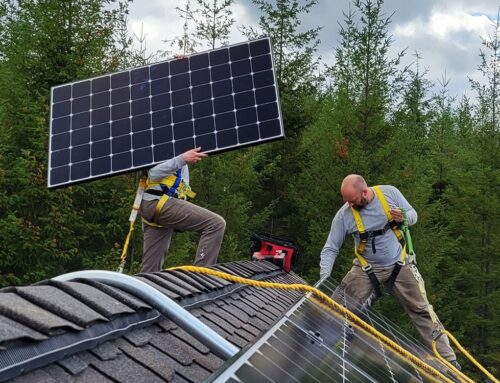This question gets asked a lot by those interested in going solar, and it seems like the answer should be no sweat. But while photovoltaic (PV) solar power is gaining in popularity across many states, a variety of factors determine just how much solar installation costs in any given location. Those factors change not just from state to state but from house to house.
Which factors have the biggest impact? Here’s a quick rundown:
TYPE OF HOUSE AND ITS ORIENTATION TO THE SUN
No two houses have the same combination of size, roof, and shading, and none have the same position relative to the sun. The size of your house and energy needs impact how much power you need as well as how big your PV solar system needs to be. The house’s shape also plays a role. An irregular rooftop with lots of skylights or other obstacles might make rooftop solar more challenging. Fortunately, rooftop solar is just one option for a PV solar system. Your home’s location is also important – but not for the reasons most customers think. It’s widely assumed that solar works best in a broiling hot region, but just the opposite is true. Cold, clear days are best for solar, which helps explain why New Jersey is one of the top 10 solar states despite having plenty of cold weather.
LOCAL UTILITY
Most PV solar systems work in conjunction with a local utility to provide electricity to a customer’s home. So, a local utility’s attitude toward solar can have a big impact. Fortunately, solar installers know how to smooth the way for customers, regardless of the utility’s policies. Also, regulations at both the state and local level directly affect the cost of solar. California recently became the first state to require that all new houses have solar by 2020, a move that encourages local utilities to work closely with solar homeowners. Nationwide, many utilities already offer net metering, a huge benefit that means solar customers get credit for the excess electricity they generate.
STATE AND LOCAL INCENTIVES
Until 2022, the federal Solar Investment Tax Credit will continue to help make solar installations more affordable nationwide.1 Meanwhile, state and local governments continue to encourage PV solar development in a number of ways, including tax credits, rebates, and performance-based incentives based on kilowatt-hour production.2 Massachusetts offers some of the most generous incentives. For instance, the Solar Massachusetts Renewable Target (SMART) program encourages low-income customers to go solar and promotes the installation of battery storage, among other benefits. Tax incentives can hinge on how someone buys a PV solar system. And many incentive programs are designed to jump-start the local solar industry, so they are phased out eventually. Find out what’s offered in your state so you can take advantage of them in time.
BRAND OF SOLAR EQUIPMENT
Installing a PV solar system is a long-term investment, and high-quality equipment makes for better long-term efficiency. This efficiency equals dollars for you over the more than two decades that your system will power your home. SunPower’s panels are the most efficient on the market.3 They’re supported by unified home solar systems designed for one company – not a collection of parts put together from various makers. And all of it is backed by an industry-leading 25-year warranty. Price calculators can give you a rough idea about what solar might cost, but a dealer can give you the true lowdown. SunPower has a network of dealers, including Master Dealers, who can answer any questions on price and make installation as smooth as possible.
The move to solar comes with all kinds of potential benefits – a lower or nonexistent electricity bill, a likely increase in home value4, and the possibility of tax credits1 and other incentives.2 Meanwhile, PV solar cuts your family’s carbon footprint dramatically. Ready to see if solar power saves you money? Try out our new Instant Design tool and see how much you might save, and then call us at 1-800-SunPower.
1 Tax credits subject to change. SunPower does not warrant, guarantee, or otherwise advise its partners or customers about specific tax outcomes. Consult your tax advisor regarding the solar tax credit and how it applies to your specific circumstances. Please visit the dsireusa.org website for detailed solar policy information.
2 State, local, and utility credits and incentives vary by location and are subject to change. Please visit the dsireusa.org website for detailed solar policy information.
3 Based on a datasheet review of websites of the top 20 manufacturers per IHS, as of May 2019.
4 Source: “Homes with Solar Panels Sell for 4.1% More,” Zillow Economic Research – Analysis of listing descriptions and sales transactions between 3/1/18-2/28/19. Comparison values were made in New York, NY; Orlando, FL; San Francisco, CA; and Riverside, CA. Actual impact on home values will vary.
This post originally appeared on the SunPower Resource Blog.









